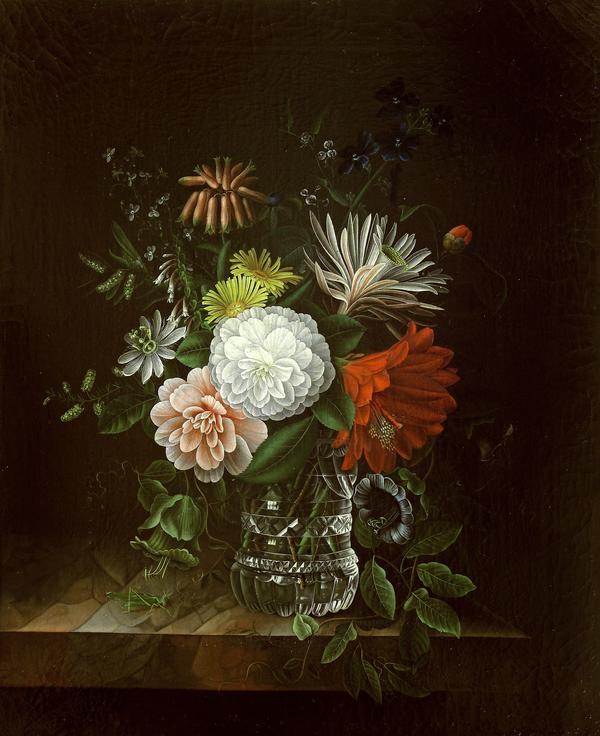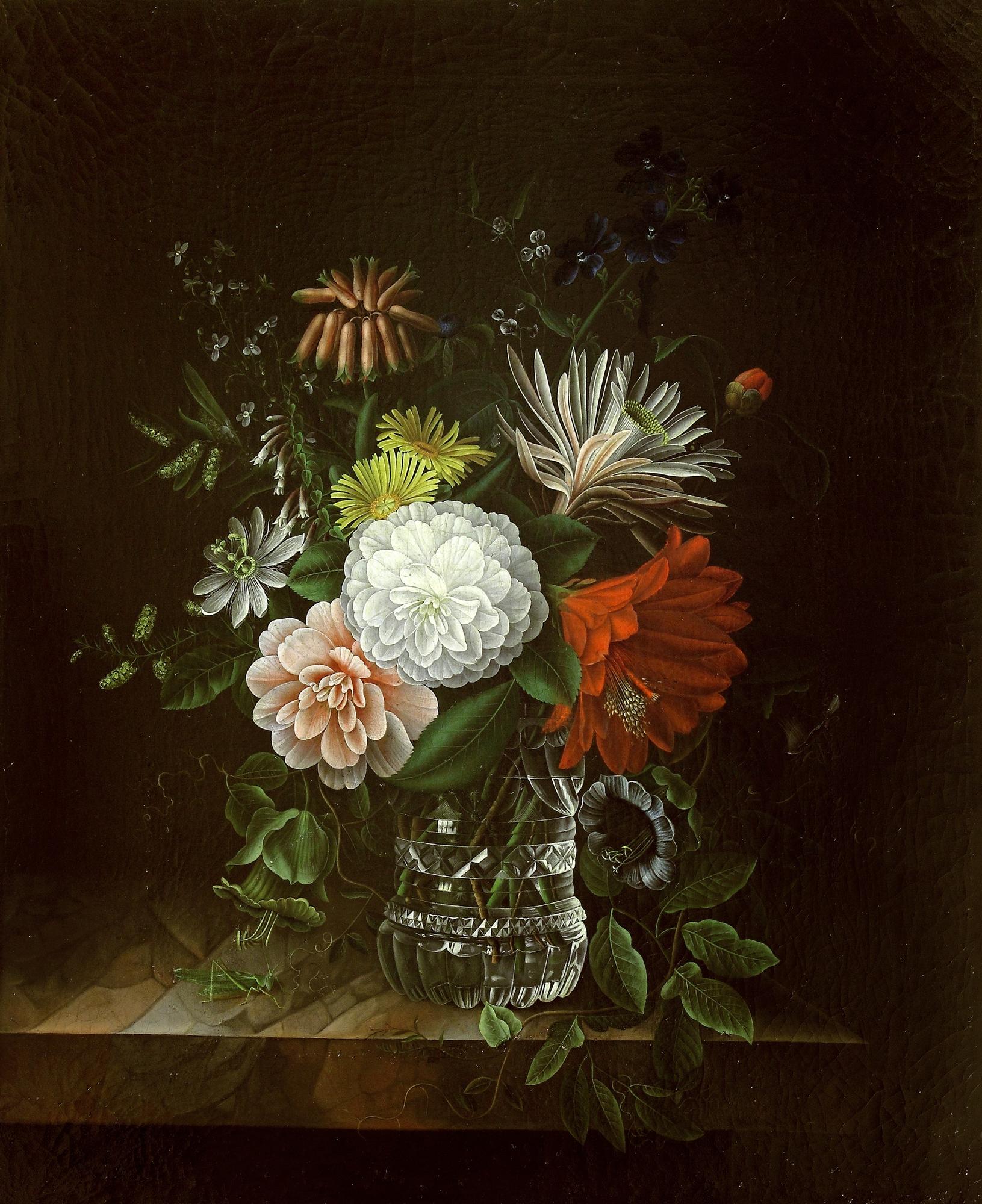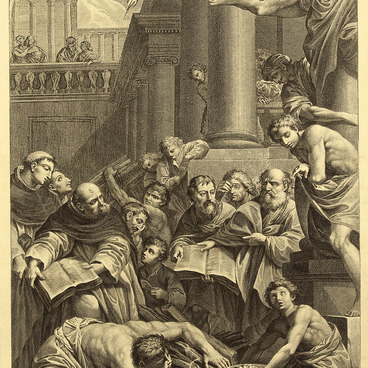Friedrich Wilhelm Freidank painted the Flowers in a Faceted Crystal Vase in the late 1820’s. The picture is painted in oil on canvas. The author painted every petal and every green leaf on the cut flowers with botanical precision. And just as authentic is the depiction of the crystal texture — the vase looks thin and translucent, with light fire on its facets. Friedrich Wilhelm Freidank painted the Flowers in a Faceted Crystal Vase in the late 1820’s. The picture is painted in oil on canvas. The author painted every petal and every green leaf on the cut flowers with botanical precision. And just as authentic is the depiction of the crystal texture — the vase looks thin and translucent, with light fire on its facets.
1 / 2
Flowers in a Faceted Crystal Vase
Время создания
late 1820’s
Размер
66x55,2 cm
canvas, oil
canvas, oil
Техника
canvas, oil
Коллекция
Выставка
6
Открыть в приложении#1

Friedrich Wilhelm Freidank
Flowers in a Faceted Crystal Vase
#2
#3
The still life displayed here belongs to the Biedermeier art style, which developed in Germany in the early 19th century. It reflected the public’s growing interest in common people’s private life and the nature around. The name Biedermeier originated from the pen-name Gottlieb Biedermeier under which poet Ludwig Eichrodt published epigrams. Biedermann is the German for a commoner, lower-middle. The pen-name itself means artless Mr Meier. The name of the style gained ground due to an interest in everyday subjects.
#4
Biedermeier generally was not restricted to flowers or fruits: artists painted strolling citizens and house interiors. The art critic Dmitry Sarabyanov, however, called it the utmost still life style for thorough attention to every single object.
Biedermeier still lives somewhat resemble Dutch and Flemish pictures of the 17th century. One of many examples is Vase of Flowers by Jan Davids de Heem, which is usually dated between 1606 and 1684.
#5
Jan Davids de Hem. Flowers in a vase. From 1606 to 1684. State Hermitage Museum.
#6
The two pictures share a lot indeed: both focus on commonplace objects, the symbolic charge is important in both. Each flower necessarily has a meaning.
#7
For instance, the blue iris in de Heem’s picture symbolizes remission of sins and the tulips extravagance. People were fascinated by such interpretations in the 17th century; numerous emblem books were published for readers to get to know about the controversial meanings of every flower. Hidden messages lived to see even the 19th century.
#11
In Freidank’s picture, the centre of the composition is a camellia. People ascribed lots of various meanings to it like honesty and perfection to name but two.
#10
Near the vase, there is a grasshopper, a hint to the forthcoming spring and abundance.
#12
On the whole, still lives were associated with evanescence of life: flowers are bound to fade. A vase with flowers could be the symbol of a human body, which may be abandoned with time.
#13
Yet, a Biedermeier still life is significantly different from old Dutch still life paintings — it urged a scientific interest in every plant. The punctilious precision in depicting every little grass blade astonished the contemporaries. Goethe even compared the artists to educated botanists.
#15
Friedrich Wilhelm Freidank was born Berlin and took drawing lessons at the Karl Rötig drawing school. In the 1820’s, Rötig made illustrations to a book about the Royal Botanical Garden in Berlin. Experts believe that the flower rarities from that garden inspired Freidank to paint this picture. Regretfully, there are only four pictures known to be authored by Freidank. Three of them are repetition variants of the picture on display.
#16
Yaroslavl Museum of Fine Arts
читать дальшескрыть
00:00
00:00
1x
Flowers in a Faceted Crystal Vase
Время создания
late 1820’s
Размер
66x55,2 cm
canvas, oil
canvas, oil
Техника
canvas, oil
Коллекция
Выставка
6
Открыть в приложении
Поделиться




